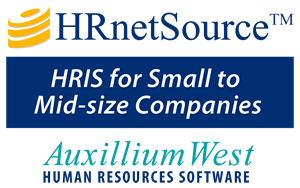Maintaining
Personnel Files
Purpose of Process (see below how HRSource™ can help):
Government regulations require that certain information be maintained on employees. Personnel files can fulfill those requirements. In addition, personnel files can serve as a useful source of information for the company, by tracking employee experience and accomplishments (when evaluating candidates for new assignments or promotions), and by listing salary history and general employment history.
Recommended Steps in the Process:
- Create a personnel file for a new employee when they are
hired. Include the following information on the employee (Note
that much of this information is collected during the employee's
new hire orientation):
- New Hire paperwork (Personnel Change Notice form) listing general employee information such as hire date, salary, job title, department, home address, etc.
- Job Opening form against which the employee was hired
- Employment Application form and resume
- Employee's Resume
- Offer Worksheet used to generate the offer and the Offer Letter
- The employee's letter of acceptance (second page of offer letter)
- Relocation Agreement (if applicable)
- Employee Agreement form
- Emergency Contact form
- Handbook Acknowledgment form
- Pre-employment test documents used in making employment
decisions
- Create a separate folder (called the Shadow File) containing
information that is not job related. This would include any
documents that cannot legally be relied upon as a basis for
personnel decisions or would not be needed in deciding a
promotion, wage increase, transfer, etc. For convenience the
shadow file can be kept next to the personnel file, but in a
separate folder to avoid the perception or allegation that any
of the shadow file information was used to make employment
decisions (e.g. promotions and terminations). The Shadow File
typically contains:
- The Self Identification form
- Employment verifications
- Salary advances, if any
- Visa information (for foreign workers)
- A Benefits file can be created, or this information can be
included in the employee's Shadow File. The Benefits file can
include:
- Benefit enrollment forms
- Enrollment forms
- Benefit and 401(k) change forms
- Beneficiary forms
- Disability claim forms
- Medical Leave of Absence Request
forms (the reason for medical leave is private, but
the length of the absence should also be indicated in the
Personnel file).
- Over the course of the employee's service with the company,
the following additional information should be kept in the
personnel file:
- Performance Management Review forms
- Salary increase letters (merit, promotion, and adjustment)
- Bonus letters
- Awards, Letters of Commendation, and other awards
- Correction Action Memos
- Employee address or department change forms
- Tuition Reimbursement forms and continuing education documentation such as courses, conferences and seminars
- Internal Job Applications
- Salary increase, job change, status change, and leave information (excluding specific leave reason)
- Resignation Questionnaire form
and termination documentation
- Permit employees to view their Personnel file during normal
business hours. Require a viewing time to be scheduled in
advance. Do not allow the employee to take the Personnel file
outside the filing area. Provide copies to the employee of
requested pages of the file. (See also Personnel
File Policy)
- Sometime after the employee's termination, remove their personnel file from the active employee's personnel file storage area, and place it in the terminated employee's personnel file storage area (for convenience of records storage). For information on records retention, refer to the Records Retention process.
Process Tips:
For previous employees who are re-hired, retrieve their personnel file from records retention, review the information in their previous personnel file, and include the previous personnel file information in a new file. Even though most of the information contained in the employee's personnel file is also contained in the Human Resource Information System (HRIS), it is recommended to maintain the manual personnel file for backup purposes and to store the original forms with the employee's signature.
Privacy laws limit access to personnel files. The only people who should have access to the employee's personnel file are 1) the employee, 2) Human Resources, 3) the employee's management, and 4) the courts, and only with a subpoena. Only Human Resources and the employee should have access to the Shadow file.
When an employee requests permission to see his/her file, it is often a signal of an employee relations issue. While fulfilling the employee's request to see the file, tactfully inquire as to the broader issue.
HRSource™ can help make record keeping paperless, With the documents module, HRSource™ can link to any electronic employee file or document on the network as well as categorize those modules.
